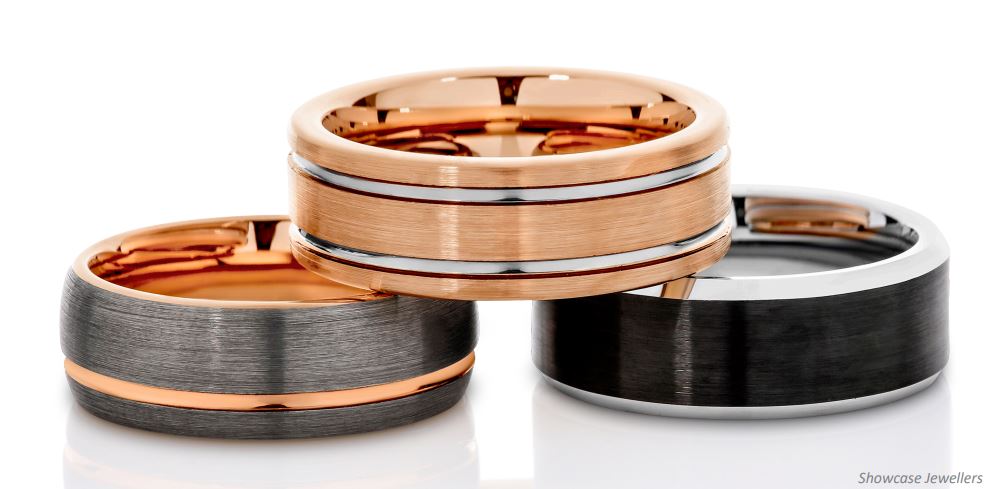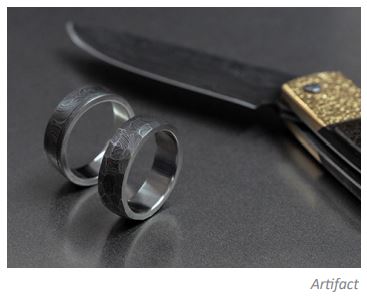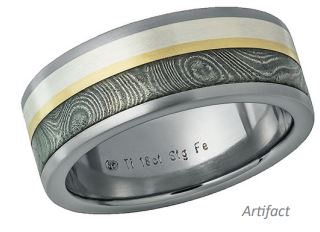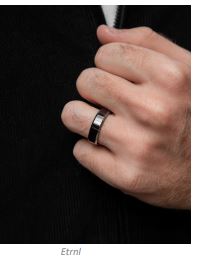Gold, silver and platinum will always have the strongest presence in the modern jewellery industry, so their cousins in the alternative metal jewellery sector can often find themselves sidelined or regarded as inconsequential. But the grey metals have their own important place in jewellery. So here we give the alternative metal jewellery industry some of the limelight with input from four experts in the Australian and New Zealand jewellery industry.

Alternative metals such as stainless steel, titanium, tungsten, cobalt and zirconium have always had their unique place in the jewellery industry, fitting that place between costume jewellery and precious metal jewellery. In a 2017 science journal article titled “Use of Titanium and Tungsten as an Alternative to Gold in Jewellery Manufacturing”, the authors said that while the majority of jewellers use noble metals for manufacturing their jewellery, the price rise of these noble metals in recent years demands innovation, and one of those avenues that could be adopted could be the use of non-noble metals.

Attractive price point and unique features
The authors of that article went on to say that pursuing alternative metals would not only decrease the cost of raw materials, but also develop products with new and innovative design. This is a belief shared by most of our contributors.

“For example, tungsten is ten times stronger than gold making it the perfect ring for someone who may otherwise damage their ring,” he said.
“Titanium is another material that is stronger than gold and is also extremely lightweight making it a great comfortable option for people who are not used to wearing jewellery.”
Artifact is a New Zealand-based jeweller who specialises in making titanium and Damascus steel rings. Director Ted Daniels shared similar sentiments as those above, stating that alternative metal jewellery is more cost-effective, and consumers like them as a point of difference. As for material qualities he said titanium is durable, harder-wearing and hypoallergenic, but conversely it is hard to work with, requires specialised equipment and skills, and manufacturers are restricted in their designs.
Ellani Collections is a New South Wales-based silver and stainless steel designer jeweller and co-director Paul Hicks echoed the price point advantage of alternative metal jewellery.

“Alternative metal jewellery can be produced at a lower cost enabling it to be marketed at affordable retail price points with good retail margins,” he said.
Darren Roberts of Cudworth Enterprises believes that the points on durability and price ensure that the alternative metals settle more naturally into the men’s jewellery market than the women’s.
“Stainless steel performs more strongly in the men’s market,” he said, “while women typically prefer sterling silver or gold. Stainless steel can also handle the way men tend to look after their jewellery,” he added. “The advantage to the alternative metals is price point. The disadvantage is that they cannot always be melted down and remade, and rings cannot be resized.”
Showcase Jewellers Buying Group is Australasia’s premier buying and marketing group, representing over 250 independent jewellery stores across Australia and New Zealand, and chief operations officer Nicola Adams noted the positive marketing potential alternative metal jewellery had. She said that most of the alternative metal jewellery is attached to branded jewellery ranges, and thus the marketing drives sales for the product more than the metal.
“This fast fashion category needs to be affordable, so consumers can buy new products continually,” she said.
“Alternate metals suits for this reason.”
Alternative, but can it be luxury?
When compared to their precious metal cousins, one may think it impossible for a stainless steel or titanium ring to be considered a luxurious piece of jewellery. Nicola believed it was not the jewellery’s metal, but the brand’s positioning where the consumer’s idea of whether a piece of alternative jewellery is a luxury product or not.
“I think it can if the brand it is being presented by is already positioned as a luxury brand,” she said.
On a similar note, Paul remarked that the concept of luxury is subjective and often up to the consumer.
A piece of jewellery can hold a strong sentimental value that carries a story or a memory, it is not always the purchase price,” he said.
“Retailers that cater to consumers of different age categories that have different levels of disposable income on their journey through life can develop strong relationships and loyalty from consumers that see them coming back when they are in a position or stage of life to make the more expensive jewellery purchases.”
Ted pointed to Artifact’s Damascus ring with a gold inner as an example of a luxurious alternative metal jewellery piece.
“Also adding diamonds will make them upmarket and luxurious,” he said.
Darren felt the country of origin often had a big impact on the impression of luxury, with countries such as Italy and Germany having reputations for craftsmanship and design.

Dissenting, Jamie said he did not believe alternative jewellery could be considered luxury, but he also believed that was part of the appeal.
“Alternative jewellery is sold at a price point that is affordable to everyone,” he said.
A bright future for the grey metals

Alternative metals have opened up the world of fashion jewellery to many different price demographics as jewellers and designers use new and non-traditional materials to create their pieces. This makes for an exciting time for jewellers and jewellery lovers alike. Indeed Jamie believes the future in this field is very exciting and full of opportunity.
“We have only scratched the surface of how alternative metal can be used and the materials we are using,” he said. “There may come a day that it would no longer be tagged as alternative.”
Cudworth Enterprises, which this year celebrates 100 years since the original company was registered, offers a wide range of products in alternative metals and believes the growth in the sector will continue.
“So long as alternative metal jewellery maintains strong design and quality, the future looks very strong,” said Darren. “We offer the largest range in Australia with a full range of categories of stainless steel jewellery with matching pieces.”
The days of ‘the other metals’ only being used in offerings of men’s rings are definitely over but the staples will always be on trend.
“Cufflinks, bangles and rings will always look good in alternative metals,” said Darren.
The alternative metal jewellery sales at Ellani Collections have seen strong growth, and Paul said he cannot see it slowing down in popularity.